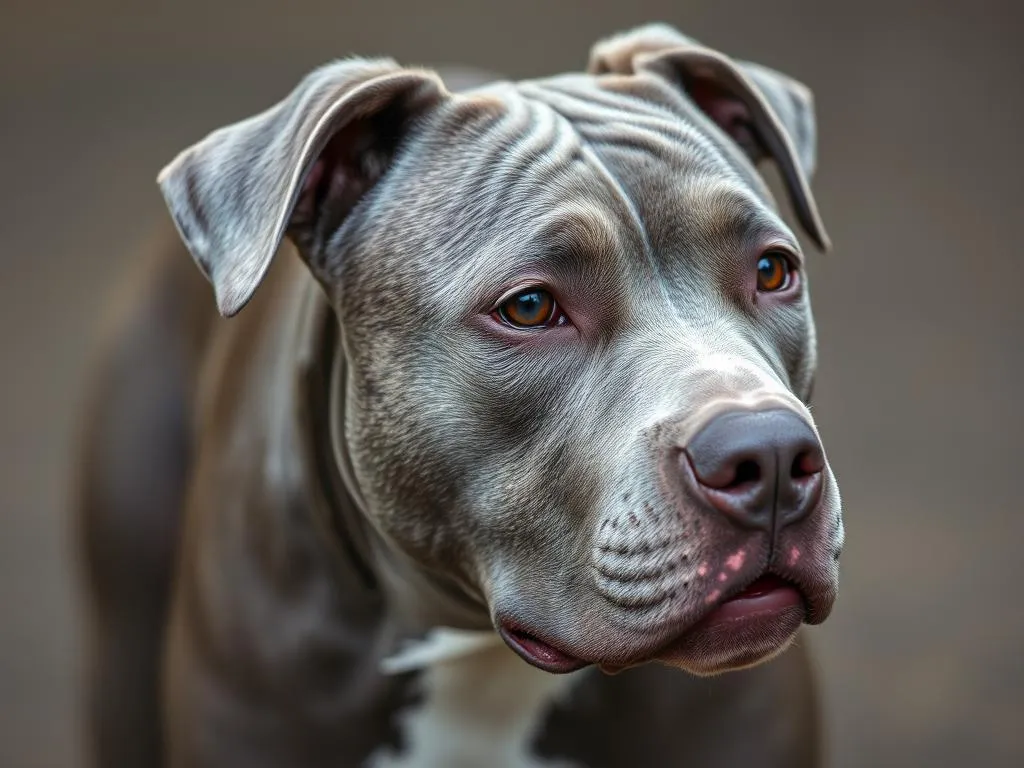
Understanding dog breeds is essential for anyone considering adding a furry friend to their family. With countless breeds available, each comes with its unique temperament, physical characteristics, and care requirements. Among these breeds, the grey pitbull stands out for its striking appearance and affectionate nature.
This article will delve into the intricacies of the grey pitbull, exploring its characteristics, care needs, training, and the responsibilities of ownership.
Understanding Dog Breeds
Definition of Dog Breeds
A dog breed is a specific group of domestic dogs that have distinct physical and behavioral traits. These traits have been developed through selective breeding, resulting in various breeds that serve different purposes—such as herding, guarding, or companionship. Understanding these characteristics is crucial for potential owners to ensure a good match between the dog and their lifestyle.
Categories of Dog Breeds
Dog breeds can be categorized into various groups based on their functions and characteristics. Here are some of the main categories:
- Working Dogs: These breeds are trained to perform specific tasks, such as guarding, pulling sleds, or rescue operations.
- Herding Dogs: These dogs are skilled in herding livestock and include breeds like the Border Collie.
- Toy Breeds: Small in size, these dogs are primarily bred for companionship.
- Sporting Breeds: These breeds are known for their hunting and retrieving abilities, such as the Labrador Retriever.
- Terriers: Energetic and feisty, terriers were originally bred for hunting and pest control.
- Hounds: Known for their strong sense of smell and tracking abilities, hounds include breeds like Beagles and Bloodhounds.
- Non-Sporting Breeds: This diverse group includes breeds that do not fit neatly into other categories, such as Bulldogs and Dalmatians.
- Mixed Breeds: Dogs that are a combination of two or more breeds fall into this category, often resulting in unique traits.
Overview of the Pitbull Breed
History and Origin
The term “pitbull” refers to several breeds, including the American Pit Bull Terrier, American Staffordshire Terrier, and Staffordshire Bull Terrier. Originally bred in the United Kingdom for bull-baiting and later as farm dogs, pitbulls were valued for their strength, intelligence, and loyalty. Over time, they transitioned into beloved family pets, showcasing a wide range of skills beyond their historical roles.
Characteristics of Pitbulls
Pitbulls are medium-sized dogs, typically weighing between 30 to 85 pounds and standing 18 to 21 inches tall. They are known for their muscular build, strong jaws, and short coats that come in various colors, including the notable grey pitbull.
In terms of temperament, pitbulls are often described as loyal, affectionate, and intelligent. However, potential owners should be aware of some common health issues, including hip dysplasia, allergies, and certain heart conditions.
The Grey Pitbull
What is a Grey Pitbull?
A grey pitbull is a color variation of the American Pit Bull Terrier and is characterized by its distinctive grey coat. While all pitbulls share similar traits, the grey pitbull is particularly noted for its striking, silvery-blue coat that can range from light to dark shades.
This color variation does not alter the breed’s inherent characteristics, including its affectionate nature and playful spirit, but it does set the grey pitbull apart visually from other color variations like brindle or fawn.
Appearance and Physical Traits
The grey pitbull typically has a short, glossy coat that is easy to maintain. Their eyes can be various colors, including brown or blue, and their muscular build gives them a powerful appearance.
- Average Size and Weight:
- Height: 18 to 21 inches
- Weight: 30 to 85 pounds
- Distinctive Features:
- Strong jawline
- Broad chest
- Defined muscles
These physical traits contribute to the grey pitbull‘s reputation as a strong and agile breed.
Temperament and Behavior
Grey pitbulls are known for their loyalty and affection towards their families. They bond closely with their owners and are often described as “people-oriented.”
- Socialization Needs: Early socialization is crucial to prevent any potential behavioral issues. Grey pitbulls thrive in environments where they can interact with other dogs and people.
- Energy Level and Exercise Requirements: These dogs are high-energy and require daily exercise to keep them happy and healthy. Regular walks, playtime, and mental stimulation are essential for their well-being.
Caring for a Grey Pitbull
Nutrition
A balanced diet is vital for the health of a grey pitbull. High-quality dog food that meets their nutritional needs is essential. Look for formulas that are rich in protein and tailored for active breeds.
- Common Dietary Restrictions and Needs: Some grey pitbulls may have food allergies, particularly to grains or certain proteins. It’s essential to monitor their diet and consult with a veterinarian for tailored advice.
Exercise Requirements
Grey pitbulls require at least 60 minutes of exercise daily. This can include:
- Long walks or runs
- Interactive play sessions, like fetch
- Mental stimulation through puzzle toys or training exercises
Engaging them in various activities helps to keep their minds sharp and bodies fit.
Grooming and Health Care
Grooming a grey pitbull is relatively straightforward due to their short coat:
- Grooming Needs: Regular brushing—about once a week—will help remove loose hair and keep their coat shiny.
- Regular Health Check-ups: Routine veterinary visits are crucial for vaccinations and to monitor for common health issues like hip dysplasia or skin conditions.
- Common Health Problems: Grey pitbulls are prone to some genetic health issues, so preventive care and early detection are essential.
Training a Grey Pitbull
Basic Training Techniques
Training is crucial for a well-behaved grey pitbull. Early training and socialization are key to preventing behavioral issues.
- Recommended Training Methods: Positive reinforcement techniques, such as treats and praise, are effective. Consistency in commands and routines helps reinforce desired behaviors.
Behavioral Issues
Common behavioral problems in grey pitbulls can include:
- Aggression towards other dogs if not properly socialized
- Destructive behavior when bored
- Separation anxiety
Addressing these issues early through training and socialization can mitigate long-term problems.
Advanced Training Opportunities
For owners interested in further developing their grey pitbull’s skills, advanced training options include:
- Obedience Training: Teaching commands and good manners.
- Agility Training: Engaging them in physical challenges that stimulate both their body and mind.
- Protection Training: For owners interested in guarding and protection, specialized training can be pursued.
Adoption and Ownership
Finding a Grey Pitbull
If you’re considering adding a grey pitbull to your family, it’s essential to adopt from reputable sources:
- Where to Adopt or Purchase: Look for local shelters, rescue organizations, or responsible breeders who prioritize the health and temperament of their dogs.
- Considerations When Choosing a Breeder: Ensure the breeder conducts health testing and provides a nurturing environment for their puppies.
Responsibilities of Ownership
Owning a grey pitbull comes with significant responsibilities:
- Commitment and Lifestyle Changes: These dogs thrive on attention, exercise, and companionship, so be prepared for a lifestyle that accommodates their needs.
- Legal Considerations: Be aware of any breed-specific legislation in your area, as pitbulls can face restrictions in some regions.
Myths and Misconceptions
There are many myths surrounding pitbulls that can lead to misunderstanding:
- Common Myths: Some believe that all pitbulls are aggressive; however, with proper training and socialization, they can be gentle and loving companions.
- Clarifying Misconceptions: Educating others about the true nature of grey pitbulls can help promote better understanding and reduce stigma.
Conclusion
The grey pitbull is a remarkable breed characterized by its loyalty, intelligence, and striking appearance. Understanding the needs and traits of this breed is essential for potential owners. From proper nutrition and exercise to effective training and socialization, responsible ownership can lead to a fulfilling relationship with these affectionate dogs.
Taking the time to learn about the grey pitbull ensures that you provide a loving and supportive environment for your new companion, leading to a joyful and rewarding experience for both you and your dog.









